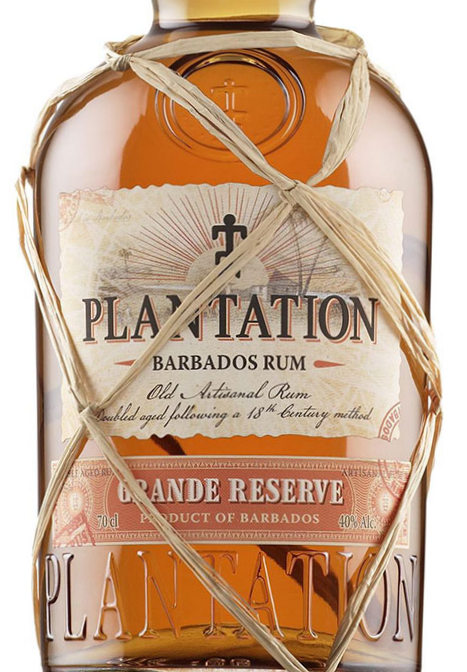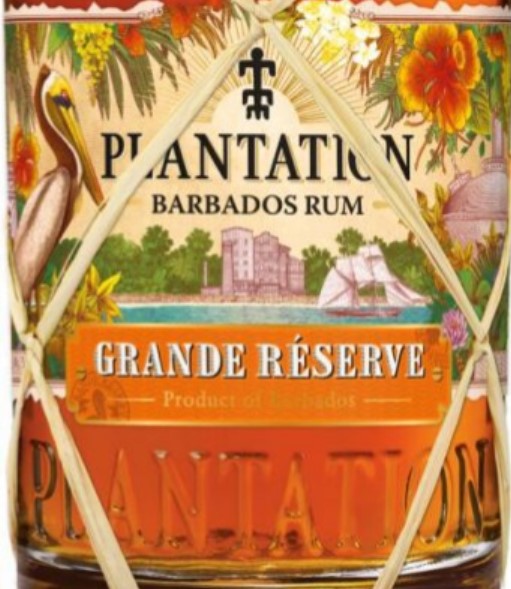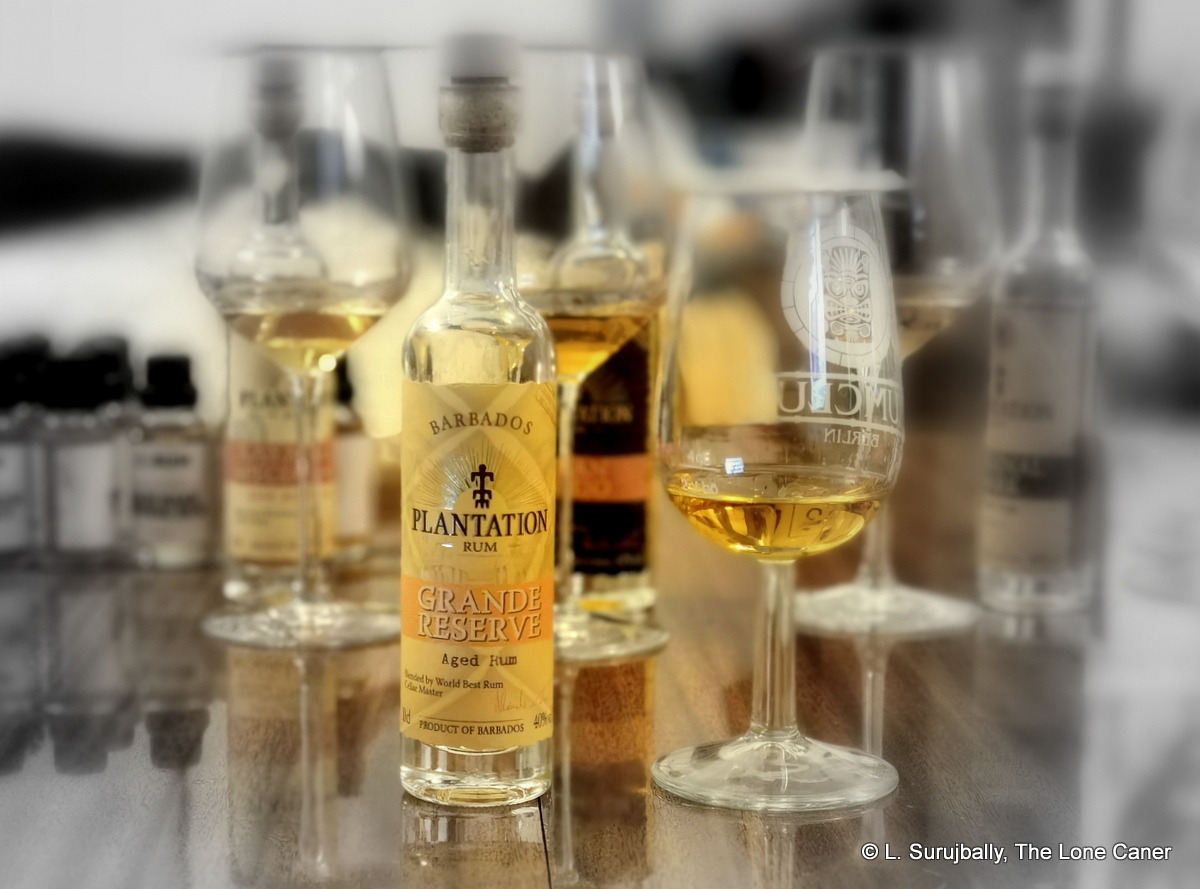At first I thought the Barbados Grande Reserve Aged Rum was a replacement for the five year old Barbados rum from Plantation which I had tried many years ago, but further investigation showed them to be quite separate. Both, however, are part of the Signature blends which include the Barbados 5, the XO, Grand Anejo and Xaymaca — these are what one might infer are entry level rums for the curious (to call them ‘premium’ would be a stretch). They are neither bartenders’ mixing staples like the Three Star, OFTD or Original Dark, nor expensive limited editions like the upscale Extreme, Single Cask or Vintage series, and exist in a kind of everyman’s universe where “reasonableness” is the watchword.
 That said, the production ethos of the company pervades even this introductory rum. It originates from the West Indies Rum Refinery in Barbados (we all know Ferrand, Plantation’s parent company, owns it) where it is blended from pot/column still molasses-derived rums aged from one to three years, before being shipped off to France and aged in Ferrand’s facilities there for another year. It’s released at 40%, the sweetening is glossed over, and overall, like most rums of this kind from this house, it attracts equal parts dislike and appreciation depending on who’s doing the talking.
That said, the production ethos of the company pervades even this introductory rum. It originates from the West Indies Rum Refinery in Barbados (we all know Ferrand, Plantation’s parent company, owns it) where it is blended from pot/column still molasses-derived rums aged from one to three years, before being shipped off to France and aged in Ferrand’s facilities there for another year. It’s released at 40%, the sweetening is glossed over, and overall, like most rums of this kind from this house, it attracts equal parts dislike and appreciation depending on who’s doing the talking.
It’s not my intent to rehash the polarising nature and background of either the company or its production practises here, except insofar as to note there aren’t many reviews of this rum to be found1, and wonder if the vitriol surrounding the company may have an impact on any writers’ desire to get sucked in. Be that as it may, the rum has to be tried sooner or later, and for new rum drinkers who wet their beaks for the first time with it, there’s little to actively dislike: it’s as good a rum to start one’s journey with as any, and better than quite a few I’ve looked at of late.
 So, let’s get started. Nose: an introduction of crisp yet ripe fruit, like raspberries, red currants, pineapples, around which coils a waft of stinky sweet bubble gum in hot weather. Brown sugar and molasses and coconut shavings are discernible, plus some mushy bananas and tangerines that have seen better days. Nice enough nose, with enough going on not to be categorised as simply an entry-level molasses based product: it’s a bit better than that.
So, let’s get started. Nose: an introduction of crisp yet ripe fruit, like raspberries, red currants, pineapples, around which coils a waft of stinky sweet bubble gum in hot weather. Brown sugar and molasses and coconut shavings are discernible, plus some mushy bananas and tangerines that have seen better days. Nice enough nose, with enough going on not to be categorised as simply an entry-level molasses based product: it’s a bit better than that.
The palate now…not too shabby. No, seriously. A touch sharp going in at first sip, then it steadies: sweet and sour pork, hot black tea sweetened with condensed milk and cardamom (bush tea, we called it and I still make a mug a few times a month), light fruits plus a touch of unsweetened salt caramel, vanilla, cinnamon, honey, orange juice and even marzipan. The problem is it tastes a bit…flattened, even dull, like Emile’s sense of taste compared to Remy’s in Ratatouille. The music is there but the bass is too high and the top- and mid-range notes don’t come through clearly enough and this is also the case when considering the finish; which turns out to be nothing we haven’t seen before, and is even a bit boring — slightly briny, sweet, coconut shavings, vanilla, light citrus and some chocolate.
It goes down easy without reaching and that may be the key observation. Overall, it’s a relatively simple rum compared to others I’ve had (including some from Plantation themselves), yet a rum one can, with care and lowered expectations, have neat without too many issues. To be honest, I thought the rum was better than it had a right to be considering the sweetening Plantation is known for (I tested it after the session, not before…so the level was unknown to me while trying it).
The Grand Reserve stops short of being a cloying muddle, and is fortunately a ways from being a complete sugary mess — yet the additives/sugar do spoil it and make for a lesser experience, especially if one knows what one is looking for. For someone now getting into rum, it’s serviceable and they could use it as a stepping stone to get more into the field, though for getting into the Barbados style it’s useless, so forget that aspect. Those with more experience can use it as a bellwether for what to look for in Plantation’s successively more upscale (and expensive) offerings; and for those who’re really into rums, well, there’s not much to say to them, since they already know all there is to know.
(#987)(78/100)
Other notes
- The Plantation website has no details on any of the Signature rum series at all (the “learn more” link does not work)
- Most articles mention 15-16 g/L sweetening, or “dosage”. My hydrometer shows 36% ABV when measuring the rum, which works out to 15 g/L
- Leaving the empty glass in the sink to evaporate overnight leaves a slightly sticky residue to be found the next morning.
- The rum has been in production for a very long time, hence the various label changes. The first reference I can find for it dates from 2008, and is on one of the first rum review websites, Refined Vices, run by an old friend from Finland, Tatu Kaarlas (who now lives in Australia). That Grand Reserve Barbados rum had a label which stated it was from cane juice (felt by most at the time to be unlikely) not molasses…and came from Foursquare. Yeah, that’s not happening now, for sure.
Footnotes
- Rum Robin tried it in 2020, and hated it
